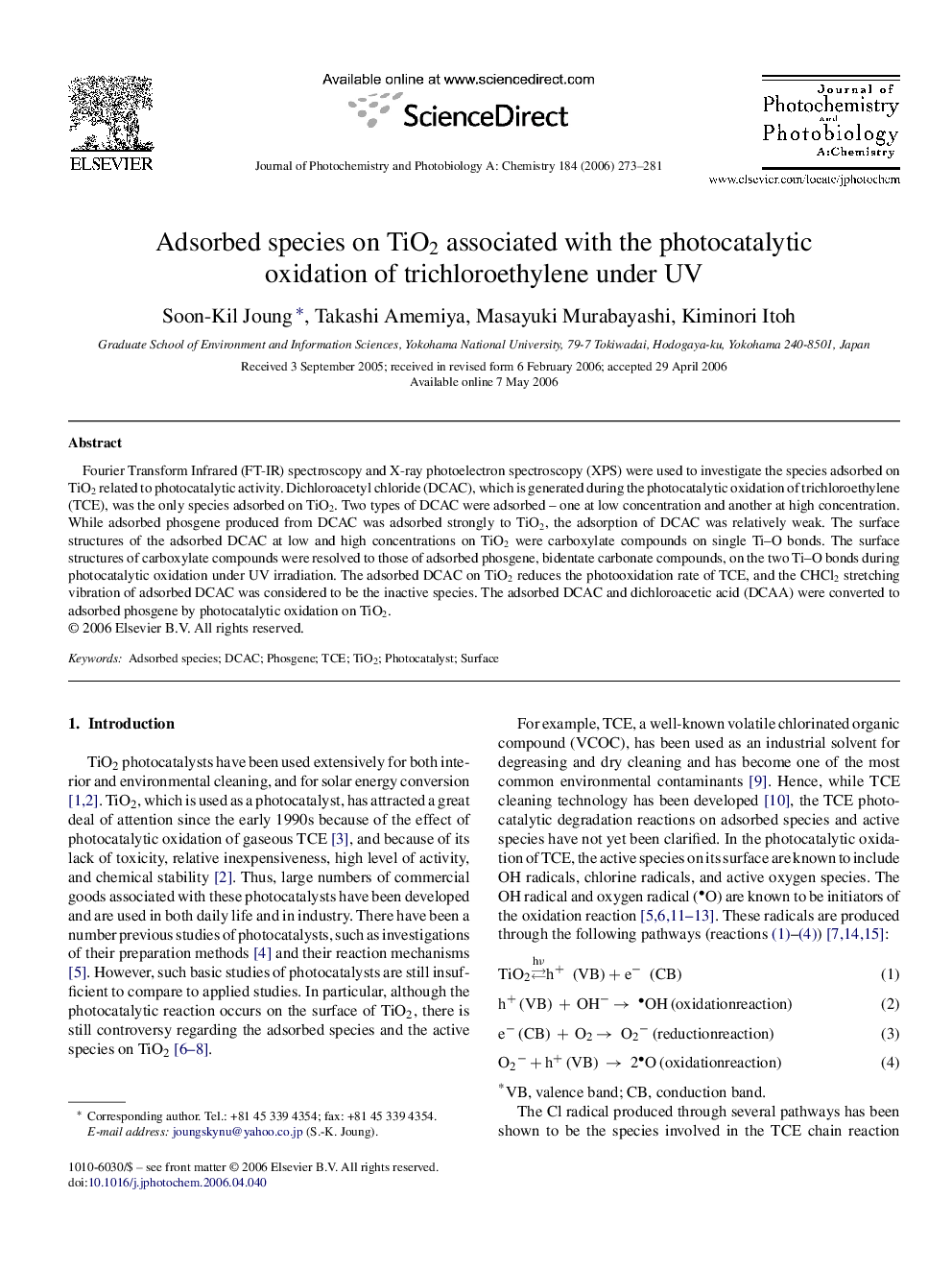| Article ID | Journal | Published Year | Pages | File Type |
|---|---|---|---|---|
| 28467 | Journal of Photochemistry and Photobiology A: Chemistry | 2006 | 9 Pages |
Fourier Transform Infrared (FT-IR) spectroscopy and X-ray photoelectron spectroscopy (XPS) were used to investigate the species adsorbed on TiO2 related to photocatalytic activity. Dichloroacetyl chloride (DCAC), which is generated during the photocatalytic oxidation of trichloroethylene (TCE), was the only species adsorbed on TiO2. Two types of DCAC were adsorbed – one at low concentration and another at high concentration. While adsorbed phosgene produced from DCAC was adsorbed strongly to TiO2, the adsorption of DCAC was relatively weak. The surface structures of the adsorbed DCAC at low and high concentrations on TiO2 were carboxylate compounds on single Ti–O bonds. The surface structures of carboxylate compounds were resolved to those of adsorbed phosgene, bidentate carbonate compounds, on the two Ti–O bonds during photocatalytic oxidation under UV irradiation. The adsorbed DCAC on TiO2 reduces the photooxidation rate of TCE, and the CHCl2 stretching vibration of adsorbed DCAC was considered to be the inactive species. The adsorbed DCAC and dichloroacetic acid (DCAA) were converted to adsorbed phosgene by photocatalytic oxidation on TiO2.
